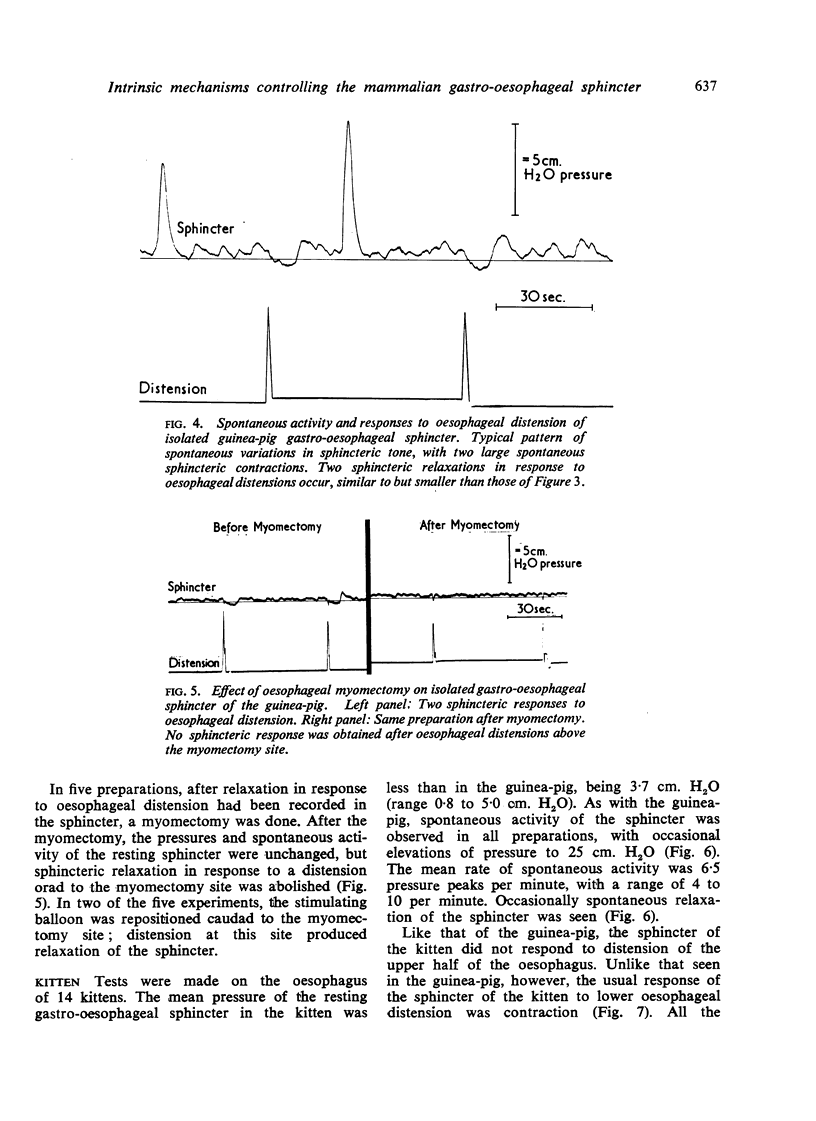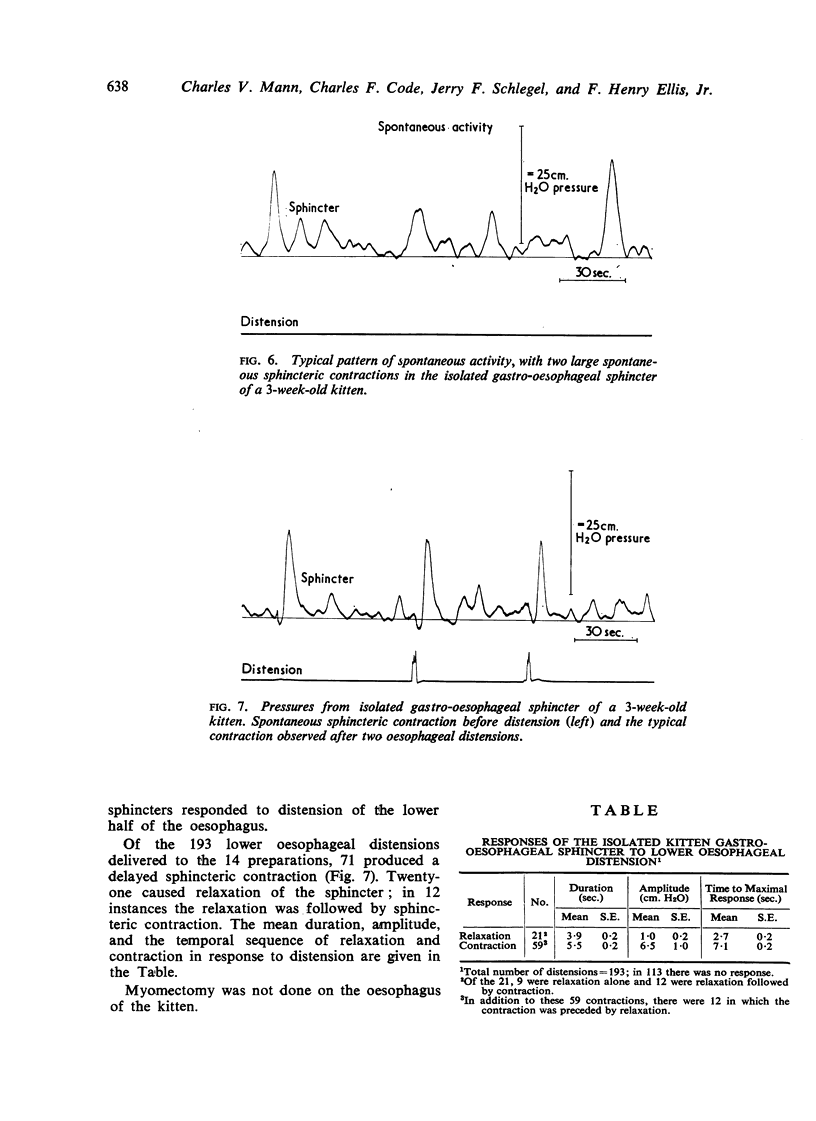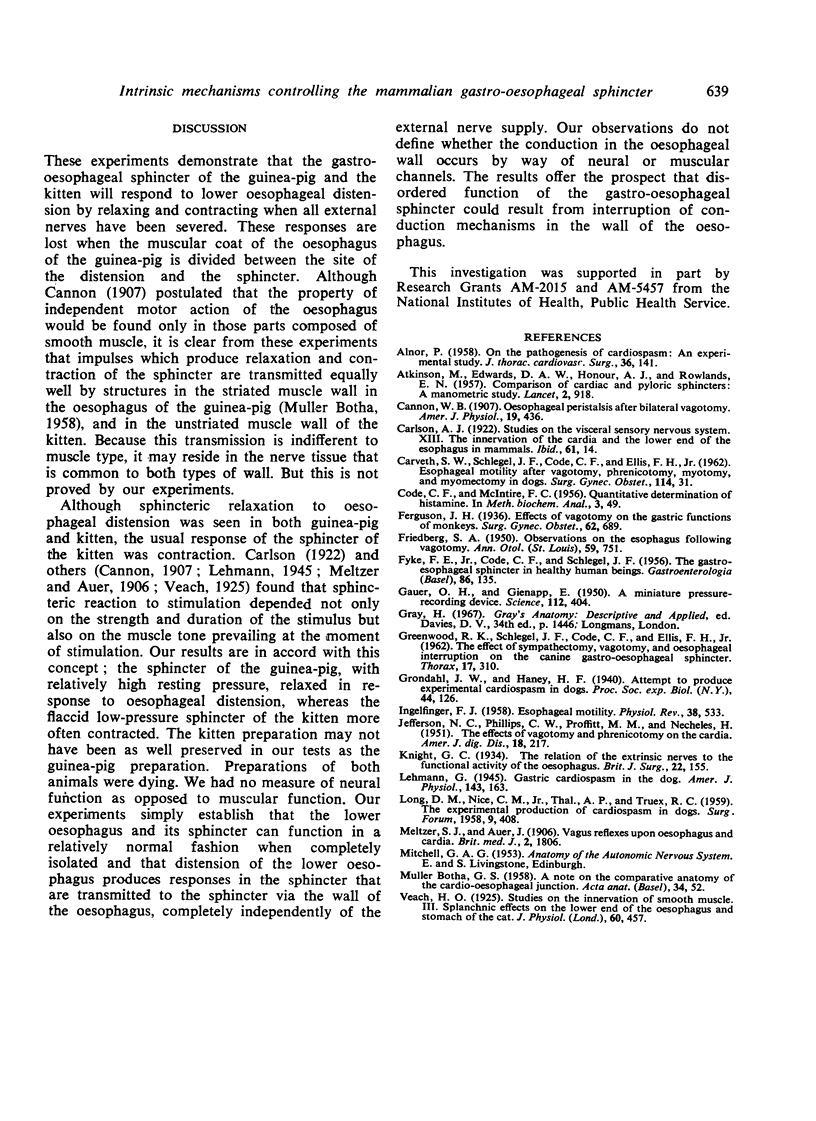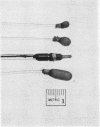Abstract
The oesophagus and gastro-oesophageal junction of 13 guinea-pigs and 14 3-week-old kittens were removed and placed in oxygenated Tyrode's solution at 36 to 37° C. Sphincteric pressures were recorded before and after oesophageal distension. In these preparations changes in the tone of the gastro-oesophageal sphincter were observed in response to lower oesophageal distension. The sphincter of the guinea-pig responded by relaxation, whereas the sphincter of the kitten responded more often by contraction. The relaxation/contraction responses of the sphincter to oesophageal distension were independent of any extrinsic nerve supply and could be abolished by removal of a circular cuff of oesophageal muscle between the source of the stimulus and the gastro-oesophageal sphincter. The intramural mechanisms affecting gastro-oesophageal sphincteric tone probably are present in all mammals, including man.
Full text
PDF





Images in this article
Selected References
These references are in PubMed. This may not be the complete list of references from this article.
- ALNOR P. On the pathogenesis of cardiospasm: an experimental study. J Thorac Surg. 1958 Aug;36(2):141–155. [PubMed] [Google Scholar]
- ATKINSON M., EDWARDS D. A., HONOUR A. J., ROWLANDS E. N. Comparison of cardiac and pyloric sphincters; a manometric study. Lancet. 1957 Nov 9;273(7002):918–922. doi: 10.1016/s0140-6736(57)92381-4. [DOI] [PubMed] [Google Scholar]
- CARVETH S. W., SCHLEGEL J. F., CODE C. F., ELLIS F. H., Jr Esophageal motility after vagotomy, phrenicotomy, myotomv. and mvomectomv in dogs. Surg Gynecol Obstet. 1962 Jan;114:31–42. [PubMed] [Google Scholar]
- CODE C. F., FYKE F. E., Jr, SCHLEGEL J. F. The gastroesophageal sphincter in healthy human beings. Gastroenterologia. 1956;86(3):135–150. doi: 10.1159/000200544. [DOI] [PubMed] [Google Scholar]
- CODE C. F., MCINTIRE F. C. Quantitative determination of histamine. Methods Biochem Anal. 1956;3:49–95. doi: 10.1002/9780470110195.ch3. [DOI] [PubMed] [Google Scholar]
- FRIEDBERG S. A. Observations on the esophagus following vagotomy. Ann Otol Rhinol Laryngol. 1950 Sep;59(3):751–759. doi: 10.1177/000348945005900319. [DOI] [PubMed] [Google Scholar]
- GAUER O. H., GIENAPP E. A miniature pressure-recording device. Science. 1950 Oct 6;112(2910):404–405. doi: 10.1126/science.112.2910.404. [DOI] [PubMed] [Google Scholar]
- INGELFINGER F. J. Esophageal motility. Physiol Rev. 1958 Oct;38(4):533–584. doi: 10.1152/physrev.1958.38.4.533. [DOI] [PubMed] [Google Scholar]
- JEFFERSON N. C., PHILLIPS C. W., PROFFITT M. M., NECHELES H. The effects of vagotomy and phrenicotomy on the cardia. Am J Dig Dis. 1951 Jul;18(7):217–219. doi: 10.1007/BF02891957. [DOI] [PubMed] [Google Scholar]
- LONG D. M., NICE C. M., Jr, THAL A. P., TRUEX R. C. The experimental production of cardiospasm in dogs. Surg Forum. 1958;9:408–411. [PubMed] [Google Scholar]
- Veach H. O. Studies on the innervation of smooth muscle: III. Splanchnic Effects on the Lower End of the Oesophagus and Stomach of the Cat. J Physiol. 1925 Oct 31;60(5-6):457–478. doi: 10.1113/jphysiol.1925.sp002262. [DOI] [PMC free article] [PubMed] [Google Scholar]



